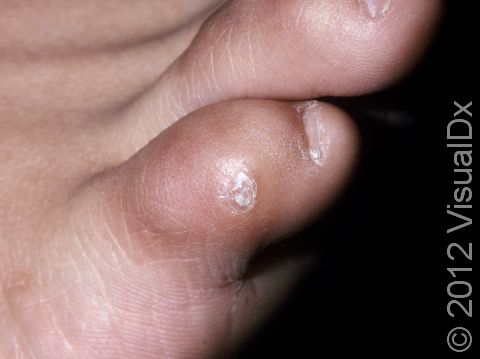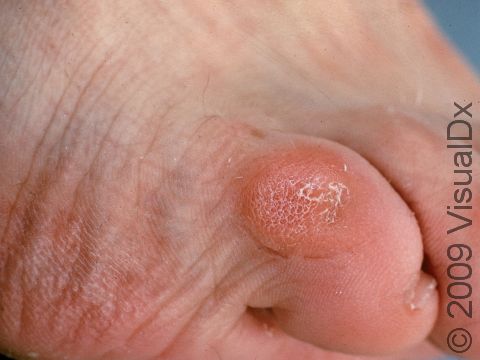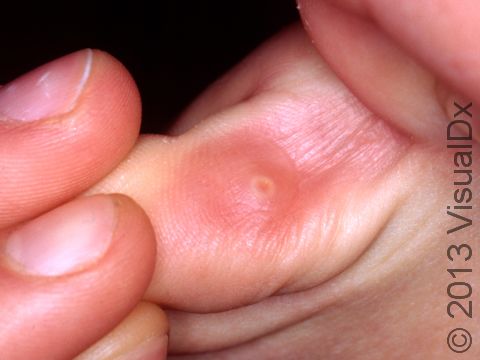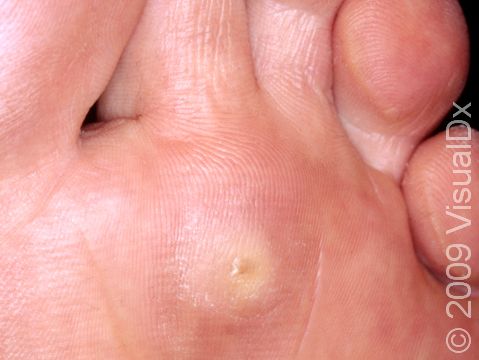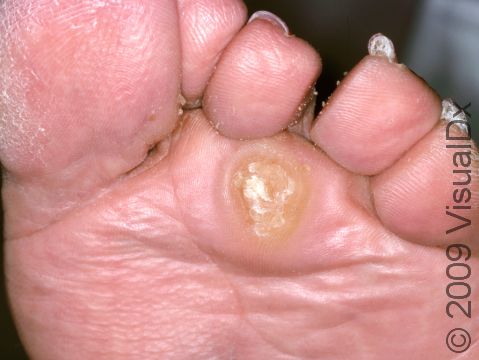Corn
Corns are thickenings of the skin composed of keratin that are typically found on the toes caused by repeated friction or pressure to the area. The base of the corn is seen on the surface of the skin while the top points inward, causing discomfort.
Corns are classified as either hard or soft, depending upon their location and appearance. Hard corns typically affect the tops of the toes and are composed of a dense core that presses on sensory nerves, causing extreme pain. Soft corns occur between the toes and are whiter and softer in appearance due to the continuous softening by sweat.
Who's At Risk?
With the exception of non-weight-bearing infants, people of all ages may develop corns.
Signs & Symptoms
Corns are primarily located on the feet, particularly the toes. However, corns can appear anywhere that foot friction occurs, whether it is on top of the foot and even on the sole.
In the case of soft corns, well-circumscribed thickenings may be seen on the toes, and soft papules may be noted between the toes. Hard corns typically affect the tops of the toes or the side of the fifth toe, and appear like calluses.
Self-Care Guidelines
To best prevent corns, make sure that shoes fit properly.
Treatments
Your physician may advise you to soak corns in warm water and file them down with an emery board or pumice stone. Over-the-counter salicylic acid plasters may be recommended for treatment as well as keratolytic agents (such as urea cream) to help soften the thickened skin.
Visit Urgency
Corns are a benign condition and may not require medical evaluation. However, if corns become very painful, evaluation should be sought.
Patients with certain medical conditions, such as diabetes or connective tissue disease, have an increased risk of complications associated with corns, and they should seek medical evaluation.
Trusted Links
References
Bolognia, Jean L., ed. Dermatology, pp.1399. New York: Mosby, 2003.
Freedberg, Irwin M., ed. Fitzpatrick’s Dermatology in General Medicine. 6th ed, pp.1247-1249. New York: McGraw-Hill, 2003.
Last modified on October 10th, 2022 at 7:27 pm

Not sure what to look for?
Try our new Rash and Skin Condition Finder
